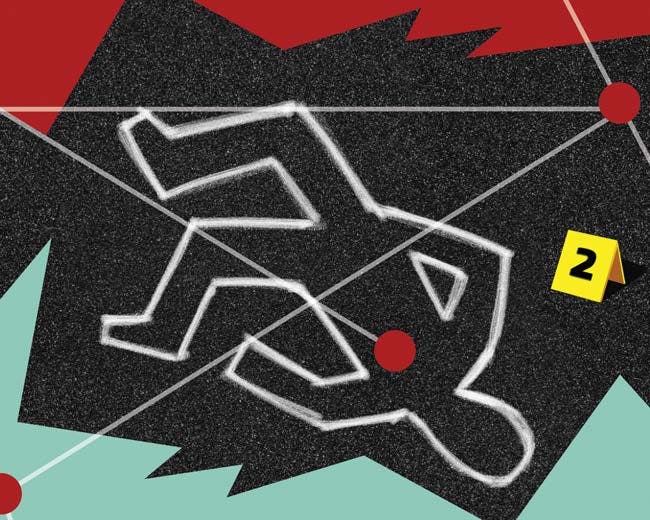
Connecting the Dots
Biology
Genetic Fingerprinting
British geneticist Alec Jeffreys would later call it a “eureka moment.” It was Monday morning, September 10th, 1984. Dr. Jeffreys had been working on variations in DNA at his University of Leicester laboratory for almost a decade. He found that certain sequences of DNA known as Variable Number Tandem Repeats varied widely among individuals. And because these sequences are inherited from both parents, each individual will have unique tandem repeats. At 9:05 a.m. that September morning “my life changed,” he wrote. He recognized that these repeats could be used to identify individuals. “The penny dropped and I realized we had genetic fingerprinting.”
The first legal case involving forensic DNA testing occurred two years later. In 1986, Dr. Jeffreys aided Leicestershire police by using DNA testing to clear the prime suspect in two rape and murder cases. The real killer later confessed and his DNA matched samples taken from the crime scene. Within a few years, DNA testing became commonplace in crime labs throughout the world.
The Double Helix
James Watson and Francis Crick did not discover DNA, the primary molecule of inheritance. Deoxyribonucleic acid (DNA) was first identified by Swiss chemist Friedrich Miescher in 1869. Although scientist began to realize DNA importance in transmitting genetic information, it took nearly a century to discover its structure.
In 1953, Watson and Crick, working in the Cavendish Laboratory at Cambridge University, published their landmark article on the double-helical structure of DNA. Aided significantly by X-rays taken by Rosalind Franklin and Maurice Wilkins at Kings College, the Watson-Crick structure is formed by complementary strands connected by hydrogen bonds. This shape, they noted, “suggests a possible copying mechanism for the genetic material.”
Forensic Analysis
Almost any type of biological material—skin, hair, blood, and other bodily fluids—contains a person’s DNA. Today, standard DNA analysis is accomplished by testing 20 genetic markers known as Short Tandem Repeats (or STRs) that are selected for their high degree of variability between individuals. They are also less expensive to process than longer Variable Number Tandem Repeats used originally in forensic testing.
PCR
Early DNA forensic testing required a large amount of clean samples, something that was often not available at crime scenes. In the early 1980s, Kary Mullis, working at Cetus Corporation in California, invented PCR, or polymerase chain reaction, a method to duplicate fragments of DNA.
The process involves heating the DNA molecule to separate the two strands. Duplicate strands are made using an enzyme primer. The result is a new double-helix segment, and millions of copies can be duplicated in a few hours even from small, degraded samples. Alec Jeffrey’s DNA fingerprinting method and Mullis’ PCR became a perfect match for forensic scientists.
